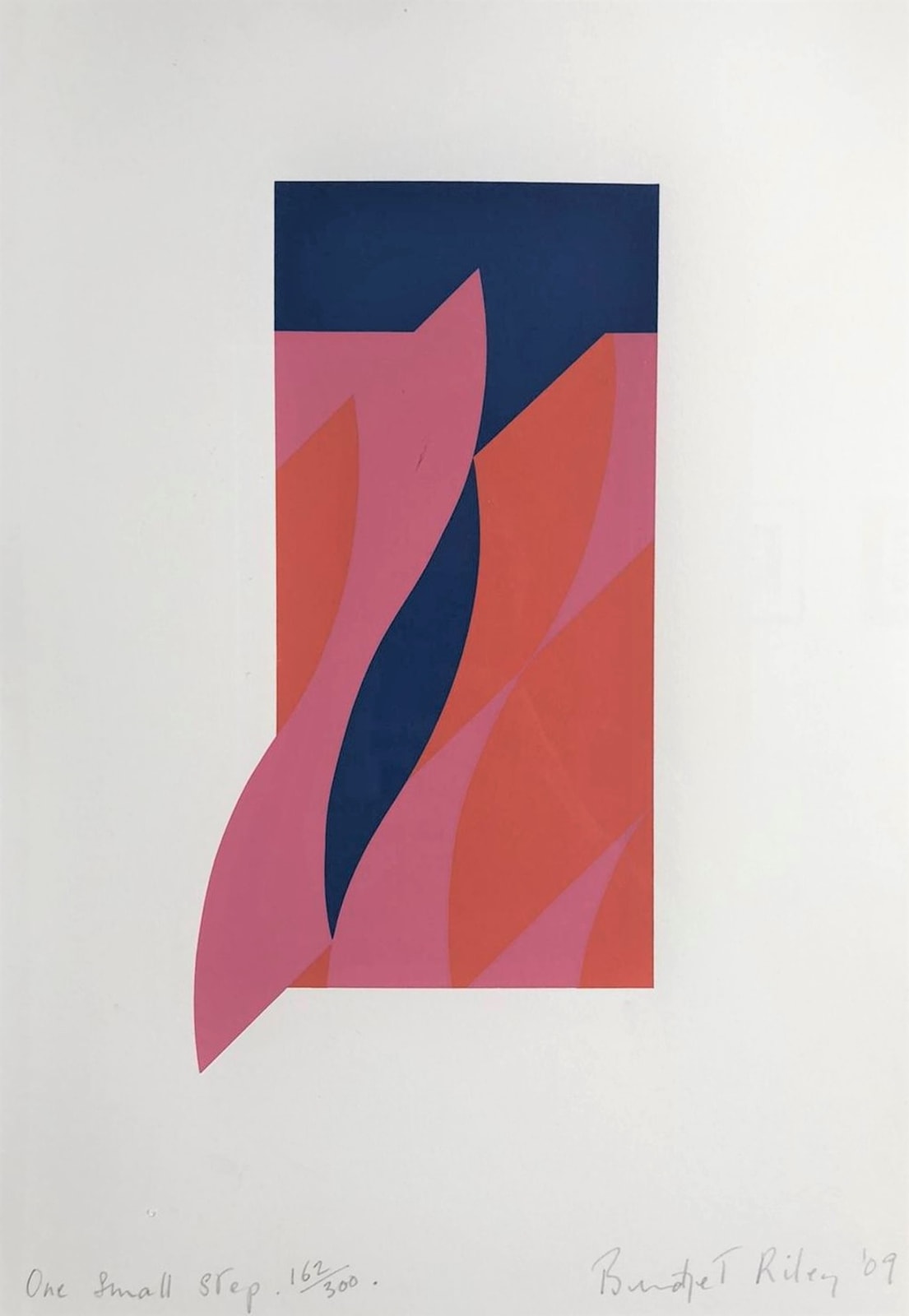Bridget Riley U. K., b. 1931
One Small Step, 2009
Screenprint in colours on white wove paper
Signed by the artist's hand, numbered and dated, recto
Edition of 300
Signed by the artist's hand, numbered and dated, recto
Edition of 300
44.1 x 29.1 cm
© Bridget Riley
'One Small Step' (2009) epitomises Bridget Riley's mastery of optical illusion and geometric abstraction. Created as part of her Lozenges series, the work features curve-edged forms in red and pink...
'One Small Step' (2009) epitomises Bridget Riley's mastery of optical illusion and geometric abstraction. Created as part of her Lozenges series, the work features curve-edged forms in red and pink that appear to emerge from the two-dimensional surface, creating a dynamic visual effect enhanced by a striking dark blue element at the centre.
The work's composition demonstrates Riley's continued exploration of perception and movement, showing how simple geometric forms can create complex visual experiences. The title cleverly references the visual element of the pink curve stepping beyond the print's concentric rectangles and Neil Armstrong's historic quote of the moon landing, suggesting themes of progress and breakthrough. This connection is particularly significant given Riley's career-long exploration of pushing artistic boundaries.
This work significantly develops Riley's artistic journey, demonstrating her mature handling of colour and form. By 2009, Riley had long established herself as a pioneer of Op Art, having transformed from her early black-and-white works to more complex colour compositions. The piece also alludes to the influence of Italian Futurist Umberto Boccioni, particularly in how the forms appear to break free from their two-dimensional constraints. The work's dynamic visual effects and sophisticated use of colour exemplify the perceptual investigations that have defined her career.
The work's composition demonstrates Riley's continued exploration of perception and movement, showing how simple geometric forms can create complex visual experiences. The title cleverly references the visual element of the pink curve stepping beyond the print's concentric rectangles and Neil Armstrong's historic quote of the moon landing, suggesting themes of progress and breakthrough. This connection is particularly significant given Riley's career-long exploration of pushing artistic boundaries.
This work significantly develops Riley's artistic journey, demonstrating her mature handling of colour and form. By 2009, Riley had long established herself as a pioneer of Op Art, having transformed from her early black-and-white works to more complex colour compositions. The piece also alludes to the influence of Italian Futurist Umberto Boccioni, particularly in how the forms appear to break free from their two-dimensional constraints. The work's dynamic visual effects and sophisticated use of colour exemplify the perceptual investigations that have defined her career.
